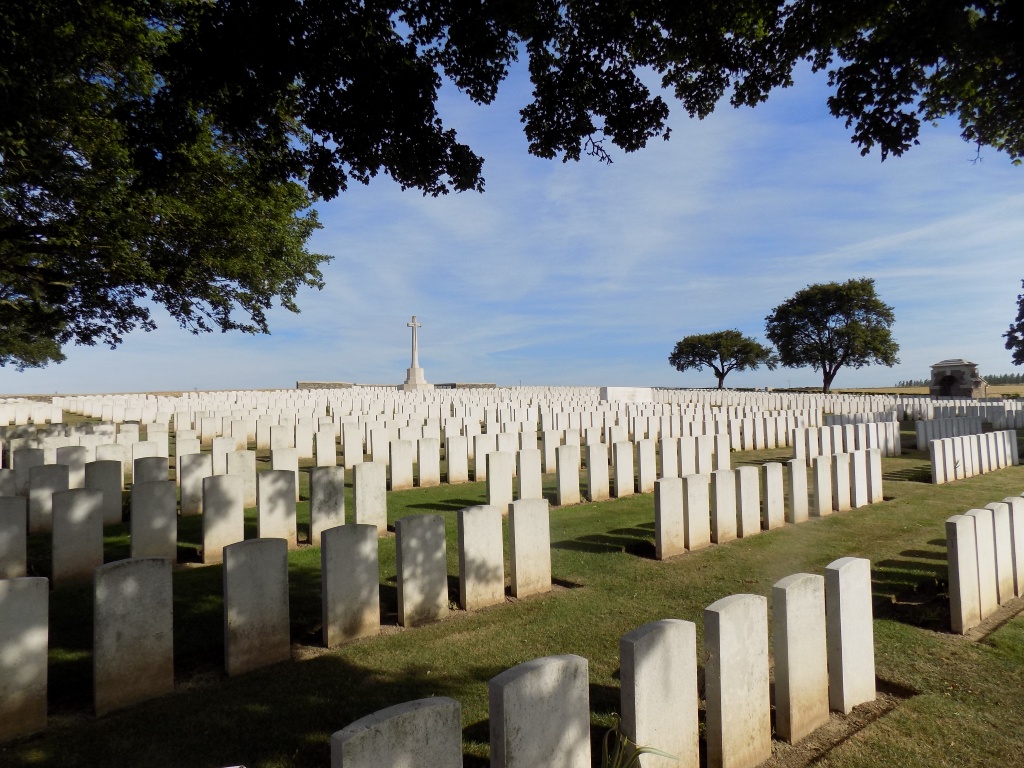Harold Littlewood
Date of birth: 1892
Date of death: 01.07.1916
Area: Outwood, Wakefield
Regiment: King's Own Yorkshire Light Infantry
Family information: Son of William and Venus Littlewood
Rank: Sergeant
Service number: 17442
War Service
In September 1914 Harold Littlewood enlisted in the army and joined the 9th Battalion, Kings Own Yorkshire Light Infantry. Along with the 10th Battalion, Kings Own Yorkshire Light Infantry, the battalion was designated part of 64th Infantry Brigade, 21st Division. Harold Littlewood quickly rose through the ranks and continued his boxing, winning the 21st Division’s championship. On 11th September Harold Littlewood, along with the 64th Infantry Brigade, sailed from Folkestone to Boulogne to join the British Expeditionary Force on the western front. On their arrival in France the 9th KOYLI was initially billeted at Nielles les Ardres, but then during successive nights marched to Mazingarbe, 3 miles west of Loos.
The Battle of Loos began on the 25th September and immediately on arrival in the battle area the 9th Battalion, in Brigade, was moving to support the 63rd Brigade in the direction of Hill 70. At 02.00 hrs on the 26th September the German front trench system was crossed, however the 64th Brigade was ordered to remain in Divisional reserve. As the enemy pushed the attackers back from Hill 70, the trenches occupied by the Brigade became involved in the fighting. During the afternoon the 9th KOYLI moved forward without official orders and advanced to counter-attack the enemy towards the Loos-Hulloch road. They were closely followed by the 10th KOYLI. The attackers started up the hill, but were cut down from the flanks by machine-gun and shrapnel fire. Both KOYLI battalions had to withdraw to their original line, the 9th KOYLI having incurred 216 casualties during this action.
The 21st Division remained in Flanders for several months before moving south to the Somme Region of France in 1916. Shortly before moving to the Somme Harold Littlewood returned to England on home leave.
At 07.30 hrs on 1st July 1916 when the Battle of the Somme began, the 21st Division was holding the line from La Boiselle to Fricourt. The objectives for the 64th Brigade were the sunken road 1,000 yards in advance of the British line and Crucifix Trench, some 400 yards further on. Five minutes before zero hour, the leading companies from the two KOYLI battalions crept out into “No Man’s Land” under cover of the barrage from their own guns. At 07.30 hrs, when the barrage lifted, the battalions advanced, only to be cut down by machine-gun fire. In spite of heavy losses and after some fierce fighting, the two battalions, in brigade, seized the first objective and pressed on to Crucifix Trench. Here the line was consolidated and held by the 64th Brigade, until relieved on the morning of 2nd July.
The 9th KOYLI incurred 495 casualties during this attack, one of whom was Sergeant Harold Littlewood, killed in action on 1st July 1916. He is now buried in the Gordon Dump Cemetery, near the twin front line villages of Ovillers and La Boisselle.
Plot 1 of the Gordon Dump Cemetery was made by fighting units after 10th July 1916 and closed in September 1916, when it contained 95 graves of mainly Australian soldiers. The remainder of the cemetery was formed after the Armistice, when graves were brought in from the 1916 battlefield surrounding Ovillers-La-Boisselle. There are now 1676 casualties of the First World War buried or commemorated in the cemetery, 1053 of them unidentified.
Family Life
Harold Littlewood was born in 1892, the son of William and his wife Venus, formerly Hemingway, of Canal Lane, Lee Moor. At an early age Harold attended the Stanley Wesleyan Sunday School and later became a member of the Lofthouse Gate Primitive Methodists Brotherhood. On leaving school Harold obtained work at Lofthouse Colliery, where he was employed as a pony driver, working underground. Harold Littlewood was also a noted boxer, having over 100 fights to his name, including winning the Pitman’s 9-stone Championship of England in 1913.
On 4th August, when war with Germany was declared, Harold was employed at Lofthouse Colliery and living with his parents at their home in Canal Lane.
 Gordon Dump Cemetery
Gordon Dump Cemetery

